BASEMENT INSPECTION
The Complete Guide to Basement and Crawl Space Foundation Problems
Residents of Columbus, Ohio, and its surrounding communities are all too familiar with weather conditions that can change in the blink of an eye. Frequent freezing and thawing present special challenges to homeowners who need to protect their crawl spaces and basements from excessive moisture and other factors that can cause damage. Whether you are already experiencing flooding or noticing cracks in the foundation, or you want to be proactive about protecting your most valuable investment, here is everything you need to know about preventative measures, warning signs, and what to do next.
What Factors Cause Foundation Problems?
While a wide variety of factors can cause foundation damage, most of them can be tied back to problems with your gutters, grading, or groundwater.
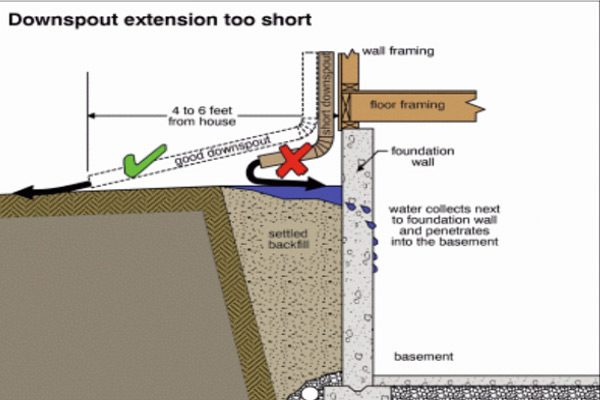
Gutters
Gutters work to protect your foundation from water damage by collecting rainwater and directing it away from your home. If your home has missing or clogged gutters, water will simply run off the edge of your roof and gather at the foundation. It is important that your home has a system of properly working gutters, downspouts, and extensions that release water a minimum of four feet from your home.
Problems with faulty gutters can be compounded if you also have malfunctioning window wells or exterior vents at the base of your home. These openings can provide the perfect place for excess water to enter the home and can cause your basement or crawlspace to flood.
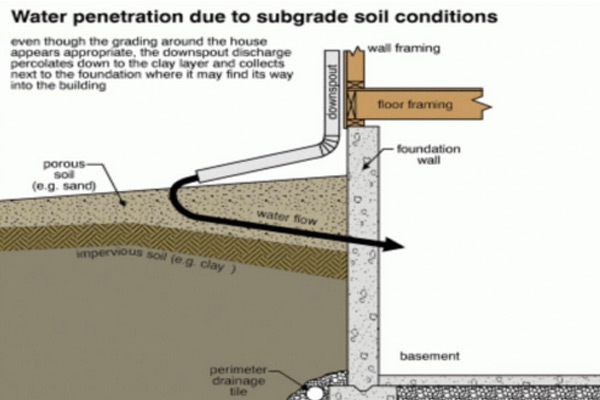
Grading
Ohio construction regulations mandate that homes be built with a certain grade. This provides a slope that naturally directs water away from the home. If this grade was not properly constructed or soil erosion has eaten away at the slope, water can either pool around your home or actually be directed toward the foundation. As you can imagine, this can create the perfect opportunity for water to wreak havoc on the foundation and seep into your home.
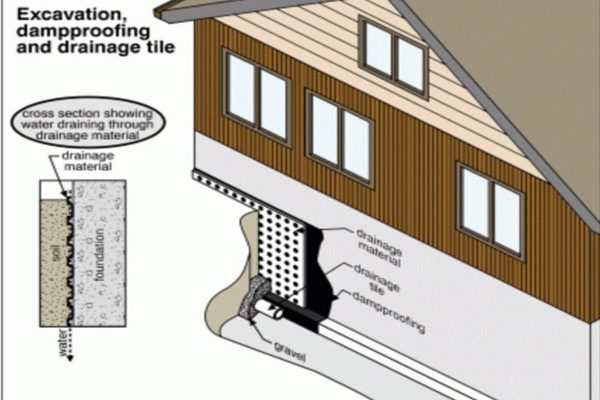
Ground Water
In some cases, flooding is an inevitable occurrence. If Mother Nature decides to unleash torrential rains, the ground may not be able to absorb the water fast enough. In addition, a sudden warming trend can also cause a massive snowmelt that the surrounding soil simply can’t handle. For those who live in low-lying areas, you will want to work with a professional to implement certain protections that will minimize flood damage.
In addition, if and when you experience flooding, you should work with an expert to make sure that all excess water is properly removed and any subsequent damage is immediately addressed. Any leftover moisture that may be difficult to detect with the naked eye can quickly turn into mold and spread throughout the home.
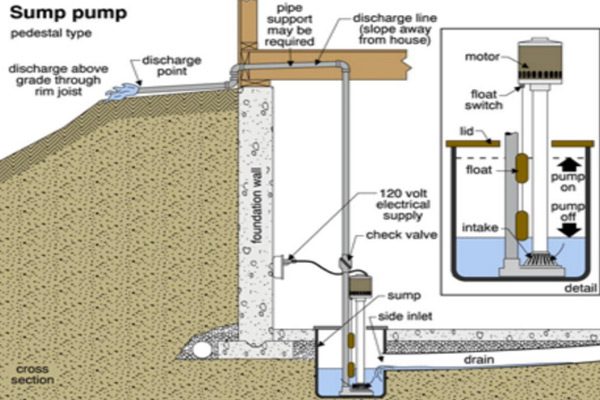
What are the Signs of Foundation and Crawlspace Problems?
The most obvious sign that some aspect of your foundation or water removal system isn’t working is the presence of puddles or standing water in your basement or crawlspace. More subtle signs of a potential problem include:
- Damp or humid air
- Dripping water
- Water spots on carpets
- Rotting wood floors
- A musty smell
- The presence of mold or mildew
These are all signs of excessive moisture that will require your immediate attention. Once you have identified that there is a problem, you will need to find the source of the problem. As mentioned above, the excess water is most likely the result of gutters, grading, groundwater, or a combination of the three.
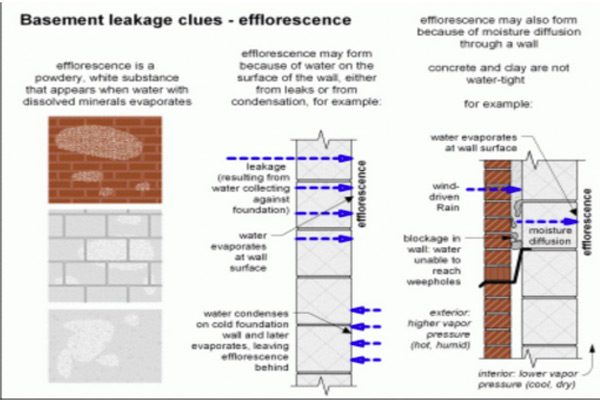
What if I Have Cracks in My Foundation or Walls?
The bad news is that even if water is being effectively directed away from your home and your basement is completely dry, you can still experience cracks in the foundation. When the soil below your home gains or loses moisture, it will expand and shrink accordingly, which can cause the house to shift and settle. Even small cracks have the potential to cause big headaches and quickly expand. If you notice any cracks, it is important to address them immediately.
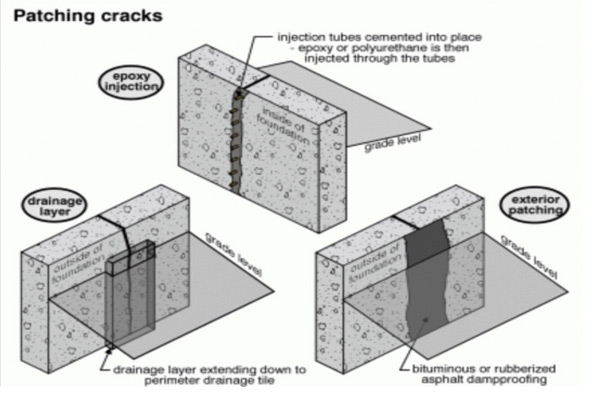
Different Types of Cracks and What They Mean
Homes with block foundations are also susceptible to cracks as the mortar between the blocks dries and becomes old and brittle. It is common to find cracks located along 90-degree corners, so pay special attention to these areas as you monitor your home.
If you notice a crack, you should take measurements and track how quickly the crack may be expanding. Mark off a specific spot on the crack and accurately record the width of the damage. Return at regular intervals to remeasure the crack and look for any changes in size. A crack that is beginning to widen at one end or exceeds ½ inch could compromise the integrity of your home and should be evaluated by a professional.
Horizontal Cracks
Horizontal cracks often appear at the corners of both poured concrete and block foundations. This type of crack indicates that the pressure from the surrounding soil has reached a point where the wall is actually breaking. Weather conditions, such as high winds, along with aging, can also cause walls to weaken to the point where they cannot withstand the pressure from the soil. A horizontal crack is a sign of a major structural problem that should be addressed immediately.
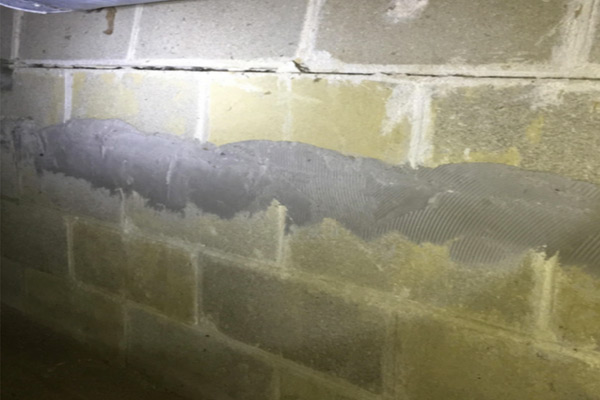
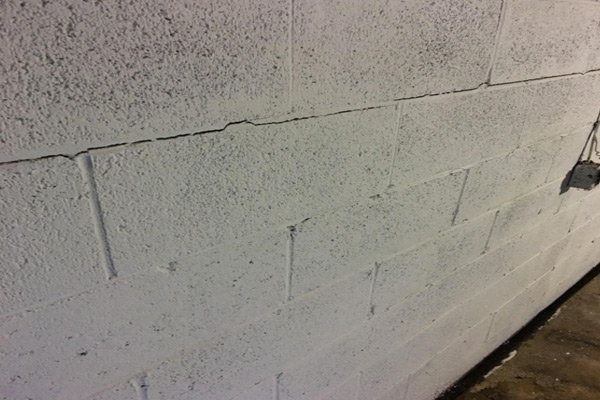
Vertical Cracks
Vertical cracks can also be an indication of structural damage. If the crack is wider at the top, this means that either the soil is expanding and heaving at the center of the foundation upwards OR the foundation is dropping. On the other hand, if the crack is wider at the bottom, then the foundation is probably BOTH heaving while also dropping at the edges. In either case, you could be dealing with structural damage, and it is time to call in the professionals.
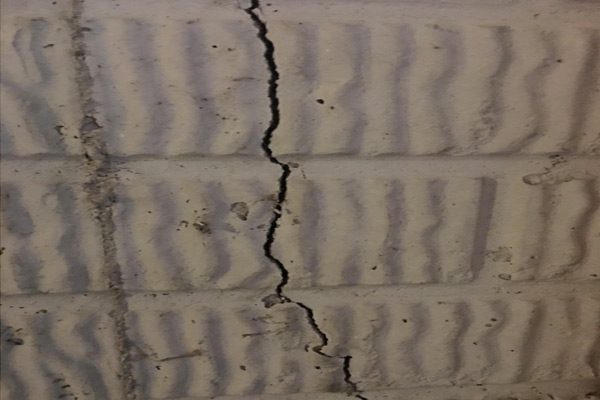
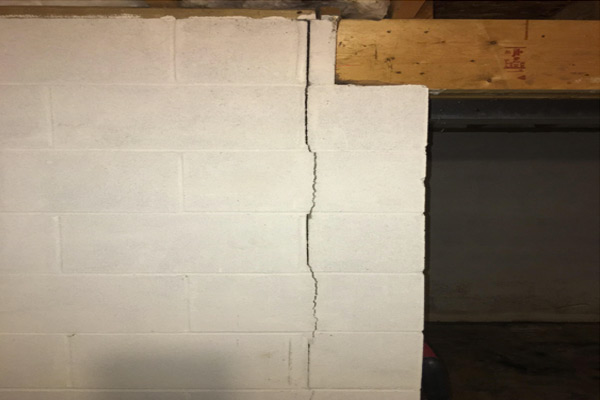
Are All Cracks a Sign of Damage?
There is some good news. Not all cracks are necessarily something to lose sleep over. It is quite common for aesthetic cracks to appear that don’t present any danger and won’t require treatment. For example, angular cracks which appear in a brick wall that has been laid directly on top of the foundation are typically the result of changing weather conditions. Seasonal changes can cause expansion and superficial cracks that don’t put your home in danger.
It is also normal to see hairline cracks above interior doors and other openings, as well as a basement floor. Even if your home was properly constructed by the best in the business, settling is a natural part of the aging process and will result in small cracks that don’t pose any risk.
What Can I Do about Water or Foundation Damage?
Ultimately, your course of action depends on the cause of the damage. If you are able to easily determine that your gutters aren’t functioning properly because they are clogged with leaves and other debris, then you should be able to tackle this problem yourself. For small cracks that appear in basement floors or above interior entryways, you can always fill the spaces with a variety of caulking materials, but it isn’t necessary to take any further action. Perhaps the best thing you can do to try and prevent superficial cracks is to use a humidifier during the winter months and a dehumidifier in the summer to help combat changing weather conditions.
If you are having trouble identifying the source of excess water or you aren’t sure whether a crack is superficial or a sign of structural damage, your best bet is to contact a professional. When it comes to your home, it is always best to be on the side of caution and address a problem before it has a chance to escalate.
The experts at Home & Commercial Inspections LLC of Columbus, Ohio, specialize in identifying the root of foundation and water damage issues and providing solutions to protect you, your family, and your home. While we love the seasonal weather in Ohio, we are also well aware of the types of challenges it can present for your home. That is why we work hard to make sure that homeowners from Grove City and Gahanna to Dublin and across the Columbus area have easy access to our team of highly trained experts.
Call Home & Commercial Inspections, LLC today to get answers to your foundation and crawlspace questions and make an appointment to have an inspector visit your home.
Have Questions About a Basement Inspection ?
Request a basement inspection in Columbus, OH. Fill out the form below, and we will give you a prompt reply.
"*" indicates required fields
